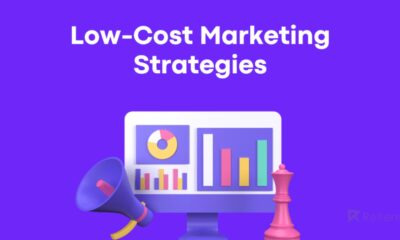Business
Tips for Finances for Long-Term Improvements and Sustainable Transformations

The aspirational goal of keeping the rise in temperature to 1.5 degrees Celsius was established by the 2015 Paris Agreement. To combat climate change, all countries must drastically cut their greenhouse gas emissions, aiming for net zero emissions by 2050. To increase the base of support from all parties, including private organizations, the Climate Ambition Alliance was founded. A change in the private sector’s decision-making and resource, knowledge, and innovation mobilization strategies is necessary to shift from the current development pathway to a low-carbon, climate-resilient one. Businesses can contribute to averting a climate catastrophe and strengthening their adaptability to change by embracing sustainable practices.
Business executives are placing a higher priority on sustainability, but many have encountered difficulties getting funding for their initiatives. It’s easier said than done, but businesses need to find the money to carry out projects and honor their commitments. This does not imply that businesses are not making an effort to implement sustainable practices. Simply put, they have trouble getting budgets and obtaining long-term funding for large, multi-year projects. It can be difficult to raise the money needed for environmental sustainability projects because many businesses decide on green investments independently of their financial decisions.
SMEs Lack the Funds Necessary to Adjust to the New Reality
Big businesses have the resources to support ambitious sustainability initiatives, so they can create them. More specifically, annual philanthropy, sponsorships, and other expense budgets pay for the projects’ start-up costs. Sadly, small and medium-sized businesses face difficulties as a result of the sustainability movement because they lack the resources to adjust to the new conditions. Due to increased expenses associated with sustainable business practices, SMEs are unable to make investments in things like energy-efficient machinery. Even voluntary certification requirements cost money to obtain and uphold. It’s time for managers to reconsider how the organization distributes its own funds.
Financing Sustainability Projects Requires Strategic Approaches
In a world that is always changing, sustainability is not only a moral obligation but also a competitive advantage for businesses. As was previously mentioned, putting sustainable transformation into practice is expensive, which could be a problem if you are unable to make the initial financial commitment. We’ll go over a few financing solutions businesses use to expand and maintain their operations in the following sections.
Issue Green Bonds
The project that the proceeds are being used for is the only distinction between green bonds and conventional bonds. The market for green bonds, which are primarily offered by governments and private businesses to raise money for initiatives or endeavors that have a positive impact on the environment or climate, is expanding. To mobilize climate-aligned capital and support sustainable finance markets, the Australian government created a credible sovereign green bond program. Annual allocation and impact reporting fall under the purview of the Treasury. Issuing green bonds can improve your reputation, increase investor diversity, and draw attention to your environmental performance.
You pledge to limit the funds’ use to the goals stated when you issue green bonds. It is important to remember that investors are growing more picky and need guarantees that bond proceeds are tracked and handled appropriately. Investors receive a smaller return if your rate of reduction of greenhouse gas emissions surpasses a particular threshold. On the other hand, a larger reward is given if the rate of reduction of greenhouse gas emissions is less than the target. If you fall short of your goals, you run the danger of being accused of greenwashing, which could harm the reputation of your business.
Get Investors in Social Impact
Long-term investment returns are reliant on strong and resilient social-ecological systems. Because communities, society, the economy, and ecosystems all interact and provide feedback to one another, socio-ecological systems are complex systems. The upkeep of these systems benefits almost everyone. If you want to improve the world, an impact investor can be a great financial partner. In addition to safe financial returns, individuals, philanthropic foundations, and equity investors fund projects or businesses that aim to accomplish social and/or environmental outcomes. At last, you’ll have enough cash for a compactor, an excellent tool for companies trying to clean up their dirty surroundings.
Identifying your influence is the bare minimum needed. An impact report can be a potent instrument in showcasing your dedication to furthering the greater good, from enhancing accountability to strengthening transparency. Prospective investors are primarily interested in seeing that you have a solid team on your side; in many cases, the team is more significant than the idea. The ability of the entity funding the impact investment to demonstrate a high degree of expertise is one of its main benefits. This expertise is useful for planning, evaluating, and assisting in the delivery of positive impact. Greater levels of engagement and collaboration result in improved knowledge sharing, which helps reduce financial and technical uncertainty.
Look for Crowdfunding
Lastly, and perhaps most importantly, think about crowdfunding if you want to exercise caution and reduce the amount of risk you take. It’s a compelling method of obtaining capital for your company, particularly if you’re just getting started since you can raise funds from the general public and draw in customers. You use an online platform to present your business idea to non-professional investors, like relatives or friends. Nevertheless, organizing and carrying out a crowdfunding campaign requires time and work. Creating a good video, researching crowdfunding platforms, creating a promotion strategy to raise awareness, and organizing a program to reward contributors are all necessary for even the simplest project.
Because of crowdfunding’s simplicity and adaptability, people with lesser incomes can invest in and support sustainable projects with a purpose. They can change the world by pre-purchasing a product or making a small financial donation (their contribution is acknowledged in one way or another). Crowdfunding helps close some of the gaps and obstacles in the traditional finance landscape while also mobilizing additional resources and incentives for sustainability. Since nothing happens instantly, as was previously mentioned, you may experience a spike near the end of the campaign. The majority of your donations are received at the start and end of the campaign.
Final Thoughts
In conclusion, expand your thinking beyond issuing bonds or taking out loans and consider novel and inventive concepts. Think about collaborating with other companies, for instance, as this could attract more investors to your projects.
-

 Tech3 weeks ago
Tech3 weeks ago12 Essential Marketing Tools Every Small Business Owner Should Try
-

 Business4 weeks ago
Business4 weeks agoSmart Strategies to Stay One Step Ahead in a Competitive Market
-

 Business4 weeks ago
Business4 weeks ago9 Low-cost Marketing Strategies and Ideas That Offer a Good Return on Investment for Small Businesses
-

 Startup2 weeks ago
Startup2 weeks agoEssential Tips for New Retail Business Owners to Succeed in a Competitive Market
-

 Tech4 weeks ago
Tech4 weeks agoHow Small Business Can Start with Marketing Automation Software
-

 Tech6 days ago
Tech6 days agoAdobe Partner with Benny Blanco to Help Small Business Branding in ‘Create Anything’ Campaign
-

 Business3 weeks ago
Business3 weeks ago7 Essential Investment Success Tips Every Investor Should Know: How to Beat the Market
-

 Tech3 weeks ago
Tech3 weeks agoGoogle’s Change to Google Local Services Ads Could Have an Impact on Millions of Small Businesses





















